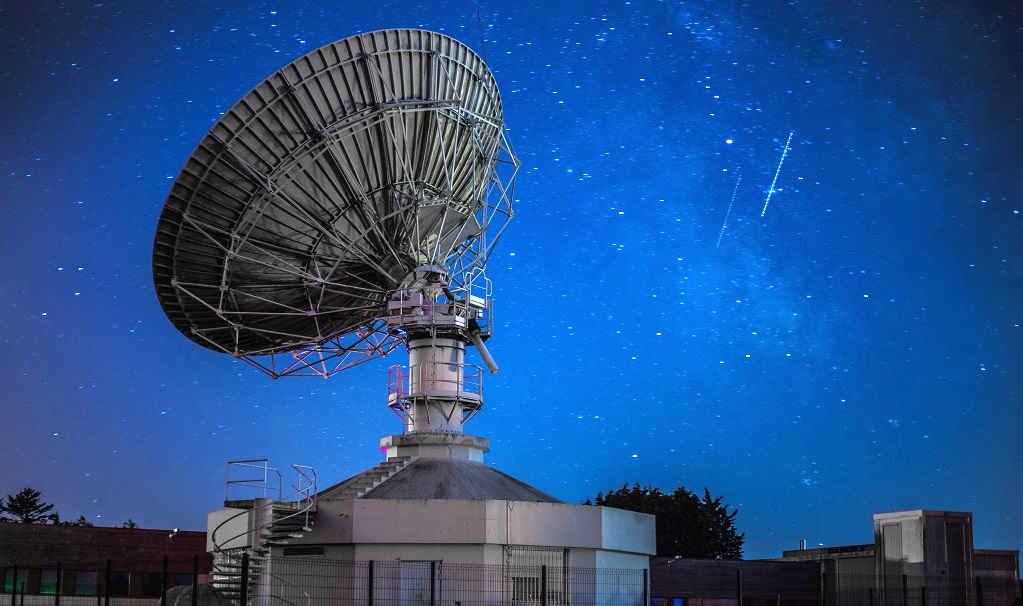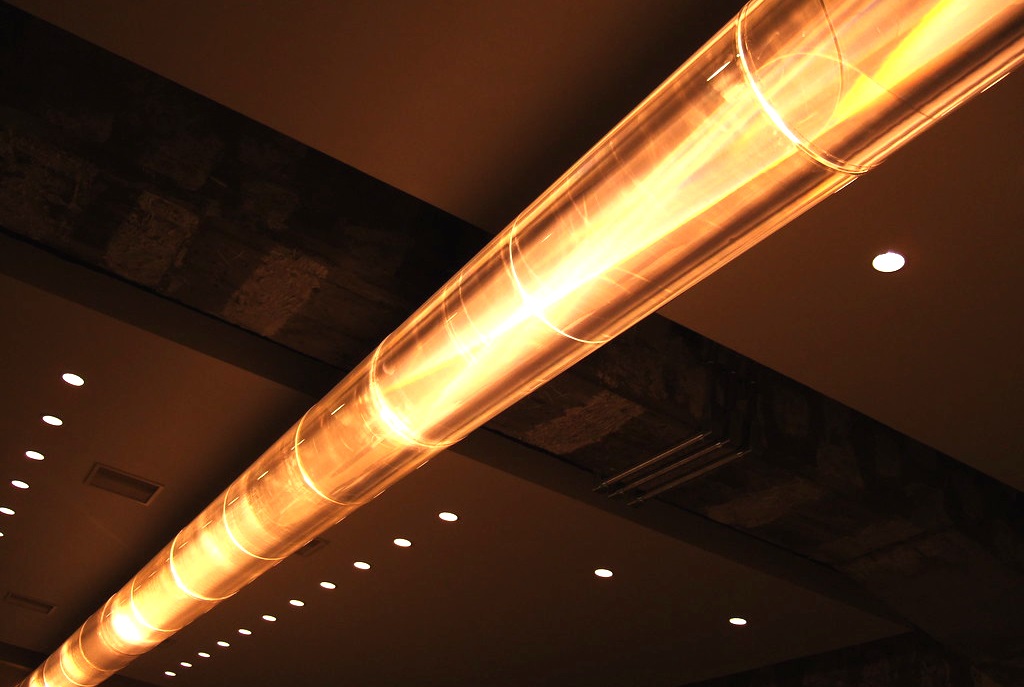Prospects for quantum networks: who engages in them and why
What kind of quantum projects are Russian and foreign engineers working on.

/ Unsplash / Shahadat Shemul
Quantum networks are data transfer systems whose operation principle is based on the laws of quantum mechanics. Information in such networks is transmitted via fiber optic cables using qubits - polarized photons. One of the defining properties of photons is “fragility”. They are destroyed during reading, so quantum networks are almost impossible to listen to. Even if an attacker conducts a MITM attack and connects to a data channel, the receiving party will immediately understand that the channel has been compromised, since it will receive “packets” with a large number of errors.
Quantum networks are used to distribute cryptographic keys between classical computing systems. For example, last year, Chinese engineers launched such a system. It uses lasers to exchange data with satellites in orbit. A similar technology in 2017 was proposed by German experts - they used the existing ground-based infrastructure and satellite hardware to transmit data.

/ Unsplash / Quentin Kemmel
Another area of application of quantum networks is the union of quantum computers. Quantum machines are already able to solve some problems faster than classical computing systems - for example, in the field of machine learning and modeling. If you combine quantum devices into clusters, you can further accelerate physical and chemical simulations (in particular, to contribute to the development of complex molecules for new medicines).
The development of quantum networks involved many world institutions from America, Europe and Asia.
It is believed that the very first quantum network was developed in the USA by order of DARPA in the early 2000s. It still operates and connects several military laboratories in Massachusetts. Around the same time, quantum networks began to be built in Europe. Then the EU countries invested several million euros in the SECOQC project, in which they design quantum solutions to ensure state security.
One of the main problems of quantum networks of that time was the inability to transmit a photon over a long distance (it rarely exceeded 50 km ). Photons are “fragile” and are easily destroyed under the influence of temperature (this is the so-called decoherence effect). Therefore, today systems are actively being developed that can increase the transmission range. For example, Dutch engineers create special repeaters that extend the "lifetime" of quanta. Scientists are already building a test network between Delft and The Hague. Presumably next year it will connect four cities in Europe at once. Similar technology is being developed by specialists from the universities of Toronto, Osaka and Toyama. In February 2019, they introduced the concept of a quantum repeater capable of transmitting photons up to 800 km (in theory).
Developments in this area are handled by a team of physicists from the USA and Switzerland. At the end of last year, they introduced a photo detector with a very low noise level, which made it possible to send a cryptographic key to a distance of 421 km while maintaining a high data transfer rate. According to the developers, the network bandwidth exceeded the performance of their previous experiments by more than 100 times.

/ CC BY-SA / Hisakuni Fujimoto
But today China is considered the absolute record holder in range. In 2016, Chinese engineers launched a quantum communications satellite and transmitted qubits over a distance of over 1,200 km. Last summer, using this satellite, engineers conducted a secure call between the Chinese and Austrian Academies of Sciences.
One of the first quantum networks in our country was launched by ITMO engineers in 2014. Fiber optic cable was laid between the two buildings of the university. Two years later, with the help of colleagues from Kazan, the network became multi-node - four nodes were placed at a distance of 40 km from each other.
Three years ago, physicists from the RCC - Russian Quantum Center introduced their quantum network. Optica was laid between two Moscow banks - the cable length was 30 km. And this summer, physicists from the RCC announced the creation of the first inter-corporate quantum network in the Russian Federation. It connected the offices of Sberbank, Gazprombank and PwC, a company offering consulting and audit services.
Another development example - in 2017, specialists from Moscow State University introduced a quantum telephone line. Voice information between the interlocutors was transmitted via a 50 km fiber optic cable. For its encryption, the quantum key distribution server, located 25 km, was responsible.
The number of quantum developments will continue to increase. And this will create large quantum networks that will connect many cities of the country at once. Just last month, plans to deploy a quantum network with data encryption were announced in Russian Railways. According to the initiators of the project, it will contribute to improving the safety of rail transport.
PS Toolkit for the provider: our webinars on systems for working with traffic .

/ Unsplash / Shahadat Shemul
What are quantum networks?
Quantum networks are data transfer systems whose operation principle is based on the laws of quantum mechanics. Information in such networks is transmitted via fiber optic cables using qubits - polarized photons. One of the defining properties of photons is “fragility”. They are destroyed during reading, so quantum networks are almost impossible to listen to. Even if an attacker conducts a MITM attack and connects to a data channel, the receiving party will immediately understand that the channel has been compromised, since it will receive “packets” with a large number of errors.
Quantum networks are used to distribute cryptographic keys between classical computing systems. For example, last year, Chinese engineers launched such a system. It uses lasers to exchange data with satellites in orbit. A similar technology in 2017 was proposed by German experts - they used the existing ground-based infrastructure and satellite hardware to transmit data.

/ Unsplash / Quentin Kemmel
Another area of application of quantum networks is the union of quantum computers. Quantum machines are already able to solve some problems faster than classical computing systems - for example, in the field of machine learning and modeling. If you combine quantum devices into clusters, you can further accelerate physical and chemical simulations (in particular, to contribute to the development of complex molecules for new medicines).
Who develops them
The development of quantum networks involved many world institutions from America, Europe and Asia.
It is believed that the very first quantum network was developed in the USA by order of DARPA in the early 2000s. It still operates and connects several military laboratories in Massachusetts. Around the same time, quantum networks began to be built in Europe. Then the EU countries invested several million euros in the SECOQC project, in which they design quantum solutions to ensure state security.
What we have on Habré:
One of the main problems of quantum networks of that time was the inability to transmit a photon over a long distance (it rarely exceeded 50 km ). Photons are “fragile” and are easily destroyed under the influence of temperature (this is the so-called decoherence effect). Therefore, today systems are actively being developed that can increase the transmission range. For example, Dutch engineers create special repeaters that extend the "lifetime" of quanta. Scientists are already building a test network between Delft and The Hague. Presumably next year it will connect four cities in Europe at once. Similar technology is being developed by specialists from the universities of Toronto, Osaka and Toyama. In February 2019, they introduced the concept of a quantum repeater capable of transmitting photons up to 800 km (in theory).
Developments in this area are handled by a team of physicists from the USA and Switzerland. At the end of last year, they introduced a photo detector with a very low noise level, which made it possible to send a cryptographic key to a distance of 421 km while maintaining a high data transfer rate. According to the developers, the network bandwidth exceeded the performance of their previous experiments by more than 100 times.

/ CC BY-SA / Hisakuni Fujimoto
But today China is considered the absolute record holder in range. In 2016, Chinese engineers launched a quantum communications satellite and transmitted qubits over a distance of over 1,200 km. Last summer, using this satellite, engineers conducted a secure call between the Chinese and Austrian Academies of Sciences.
How are you doing in Russia
One of the first quantum networks in our country was launched by ITMO engineers in 2014. Fiber optic cable was laid between the two buildings of the university. Two years later, with the help of colleagues from Kazan, the network became multi-node - four nodes were placed at a distance of 40 km from each other.
Three years ago, physicists from the RCC - Russian Quantum Center introduced their quantum network. Optica was laid between two Moscow banks - the cable length was 30 km. And this summer, physicists from the RCC announced the creation of the first inter-corporate quantum network in the Russian Federation. It connected the offices of Sberbank, Gazprombank and PwC, a company offering consulting and audit services.
Another development example - in 2017, specialists from Moscow State University introduced a quantum telephone line. Voice information between the interlocutors was transmitted via a 50 km fiber optic cable. For its encryption, the quantum key distribution server, located 25 km, was responsible.
The number of quantum developments will continue to increase. And this will create large quantum networks that will connect many cities of the country at once. Just last month, plans to deploy a quantum network with data encryption were announced in Russian Railways. According to the initiators of the project, it will contribute to improving the safety of rail transport.
What we write about in a corporate blog:
PS Toolkit for the provider: our webinars on systems for working with traffic .
All Articles